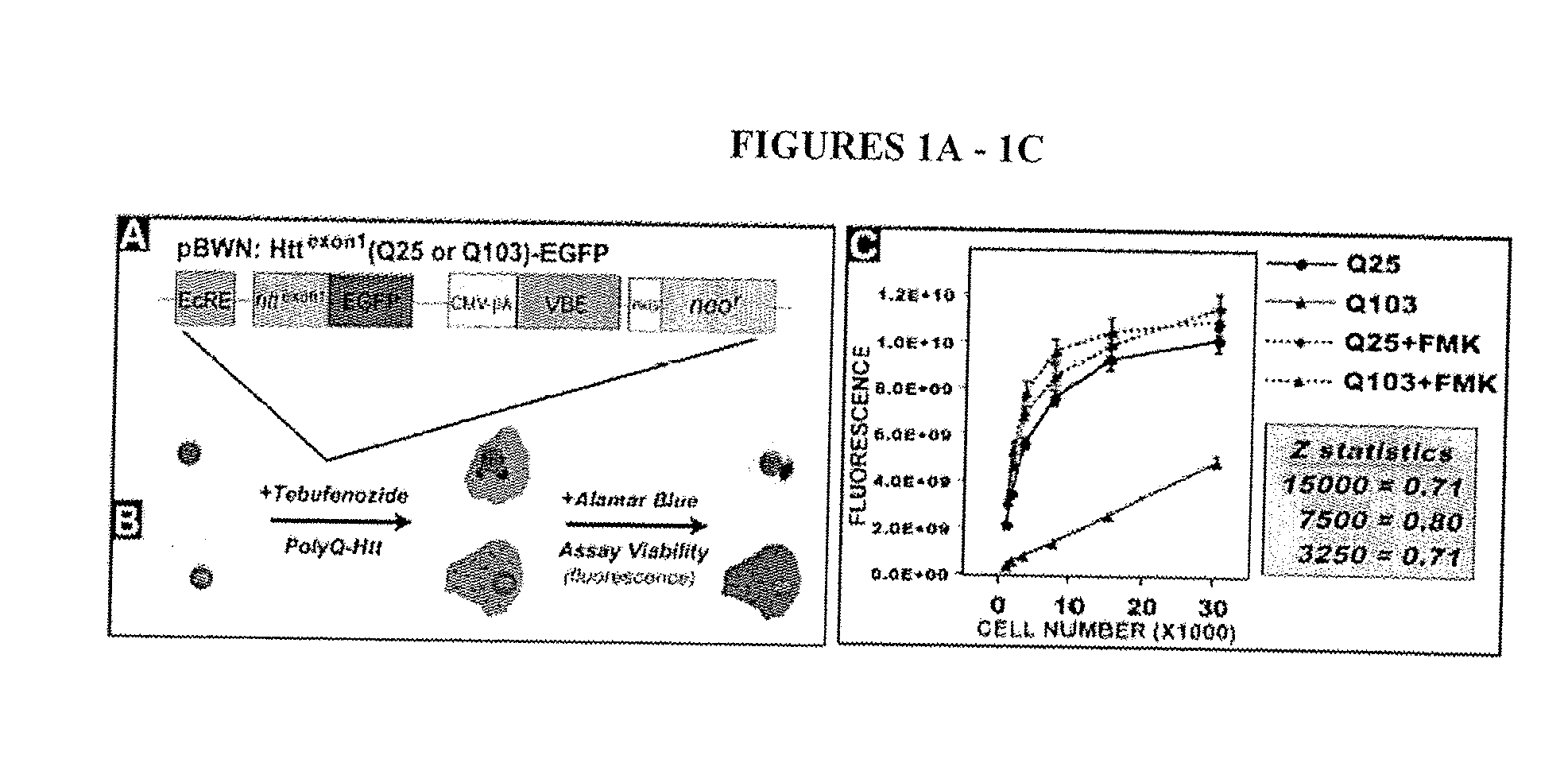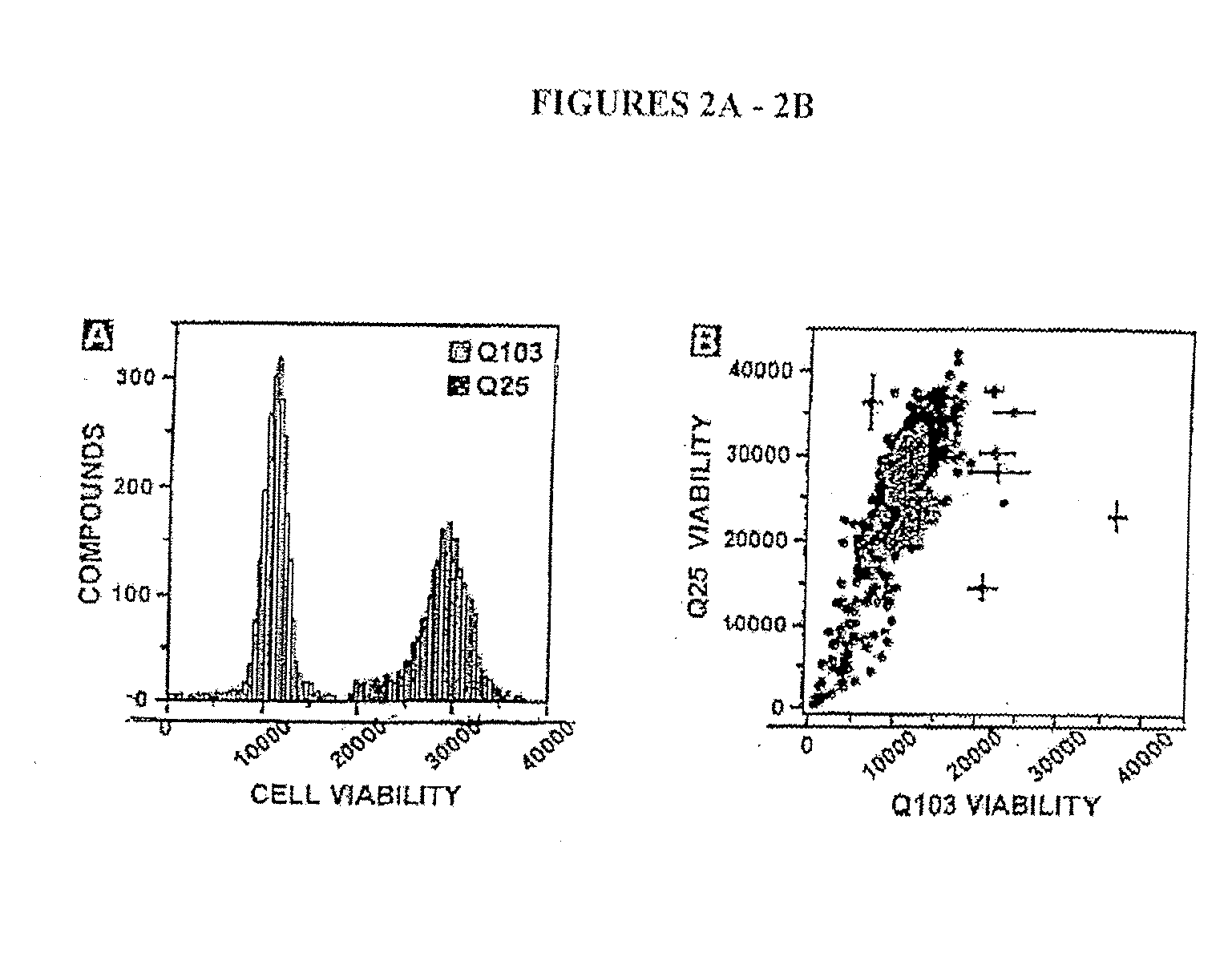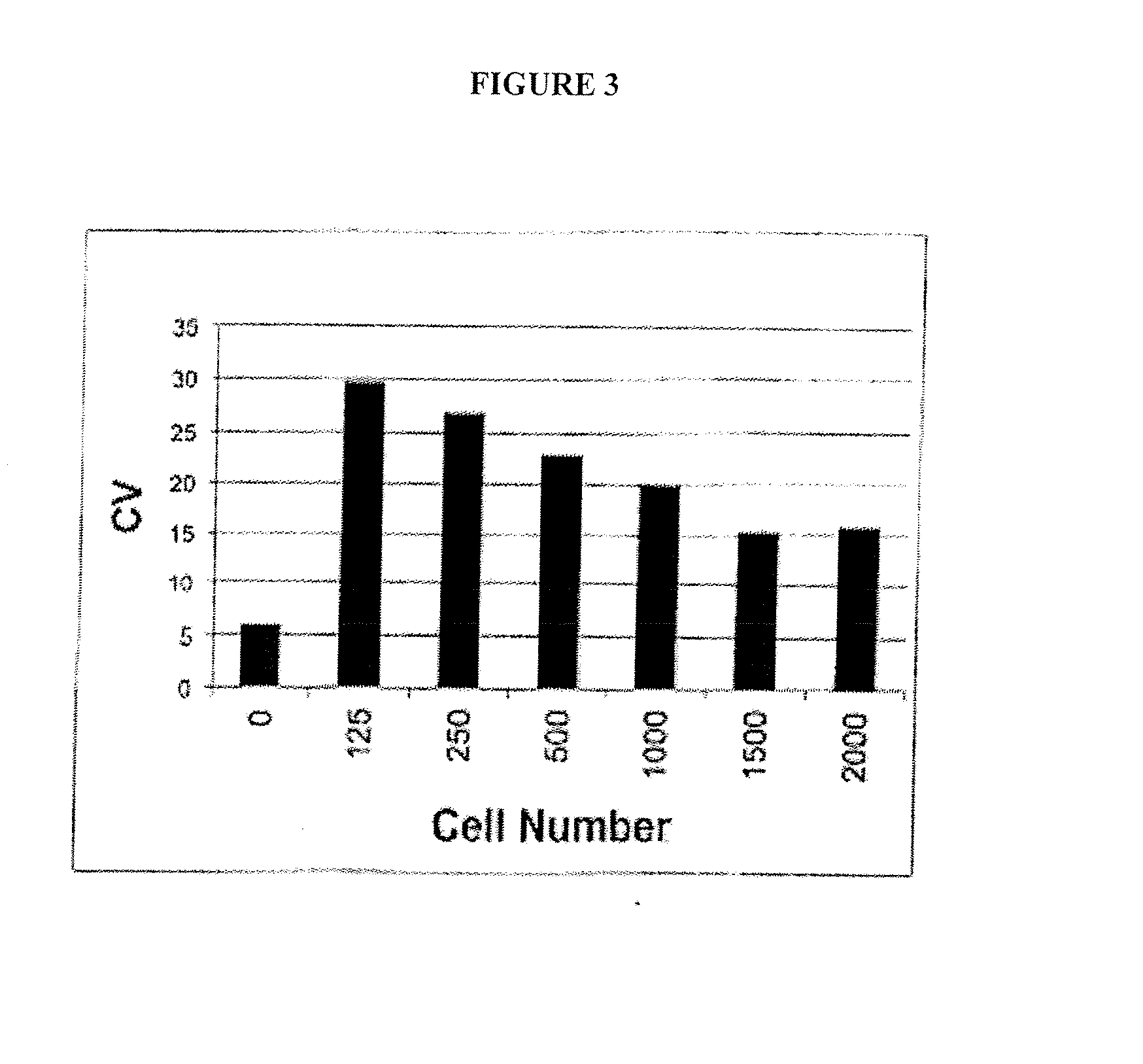Agents For Treating Neurodegenerative Diseases
- Summary
- Abstract
- Description
- Claims
- Application Information
AI Technical Summary
Benefits of technology
Problems solved by technology
Method used
Image
Examples
example 1
Screens for Small Molecule Suppressors of Expanded Huntingtin in Mammalian Cells
[0172] There are nine inherited neurodegenerative disorders caused by a polyglutamine (polyQ)-encoding trinucleotide (CAG) repeat expansion within the coding sequence of a gene. These diseases include Huntington's Disease, spinobulbar muscular atrophy, dentatorubral pallidoluysian atrophy, and the spinocerebellar ataxias type 1, 2, 3, 6, 7, and 17. Precisely how polyQ mutations lead to neuronal loss in each disease remains unclear; however, several molecular characteristics appear to be shared among the different disorders. Such characteristics include deficiencies in ubiquitin-mediated proteolysis, protease-dependent accumulation of polyQ protein fragments, formation of cytosolic and nuclear inclusions, and changes in gene expression (Zoghbi H Y and Orr H T, Annu Rev Neurosci 2000, 23: 217-47; Kaytor M D & Warren S T, J Biol Chem 1999, 274: 37507-10; Orr H T, Genes Dev 2001, 15: 925-32; Taylor J P, et ...
example 2
Identification of Small Molecule Suppressors of Polyglutamine Neurotoxicity
[0190] Huntington's disease (HD) is one of at least nine inherited neurological disorders caused by trinucleotide (CAG) repeat expansion (others being Kennedy's disease, dentatorubro-pallidoluysian atrophy, and six forms of spinocerebellar ataxia). One aim of these experiments is to identify small molecule suppressors of PolyQ neurotoxicity and to elucidate mechanisms of polyQ neurotoxicity through studying the functional means by which the identified compounds suppress polyQ-expanded Htt toxicity.
1. Identification of Compounds that Suppress PolyQ-Htt Toxicity in PC12 Cells
[0191] As described in Example 1, it was found that expressing polyQ-expanded human huntingtin exon-1 (Htt-Q103) in rat neuronal (PC12) cells led to selective toxicity over wild-type (Htt-Q25) expressing cells. Using this PC12 model assay systems approximately 50,000 small molecules (MW<2000 Daltons) were screened for their ability to p...
example 3
Characterization of the Role of Microtubules and Mitochondria in Huntington's Disease
[0205] The normal function of huntingtin (htt) and the mechanism of toxicity caused by expanded polyQ stretches are still unclear. Both a gain of novel function and a loss of normal function have been proposed to explain pathology caused by polyQ expansions in htt. Htt has an essential role in embryonic development and neuronal survival. The protein is largely cytoplasmic and is associated to some extent with microtubules (MT) and membranous compartments of the cell. Diverse functions have been proposed for htt because of its interactions with proteins involved in cellular transport (HAP1), cell death (HIPPI), transcription machinery (CBP, TAFI1130) and metabolism (GAPDH). Also, cell toxicity shows context dependence since the extreme N-terminal fragments containing the glutamine repeats are more toxic than larger fragments or full length Htt. The mechanism(s) for context dependence are unclear but...
PUM
| Property | Measurement | Unit |
|---|---|---|
| Mass | aaaaa | aaaaa |
| Molar density | aaaaa | aaaaa |
| Molar density | aaaaa | aaaaa |
Abstract
Description
Claims
Application Information
 Login to View More
Login to View More - R&D
- Intellectual Property
- Life Sciences
- Materials
- Tech Scout
- Unparalleled Data Quality
- Higher Quality Content
- 60% Fewer Hallucinations
Browse by: Latest US Patents, China's latest patents, Technical Efficacy Thesaurus, Application Domain, Technology Topic, Popular Technical Reports.
© 2025 PatSnap. All rights reserved.Legal|Privacy policy|Modern Slavery Act Transparency Statement|Sitemap|About US| Contact US: help@patsnap.com



